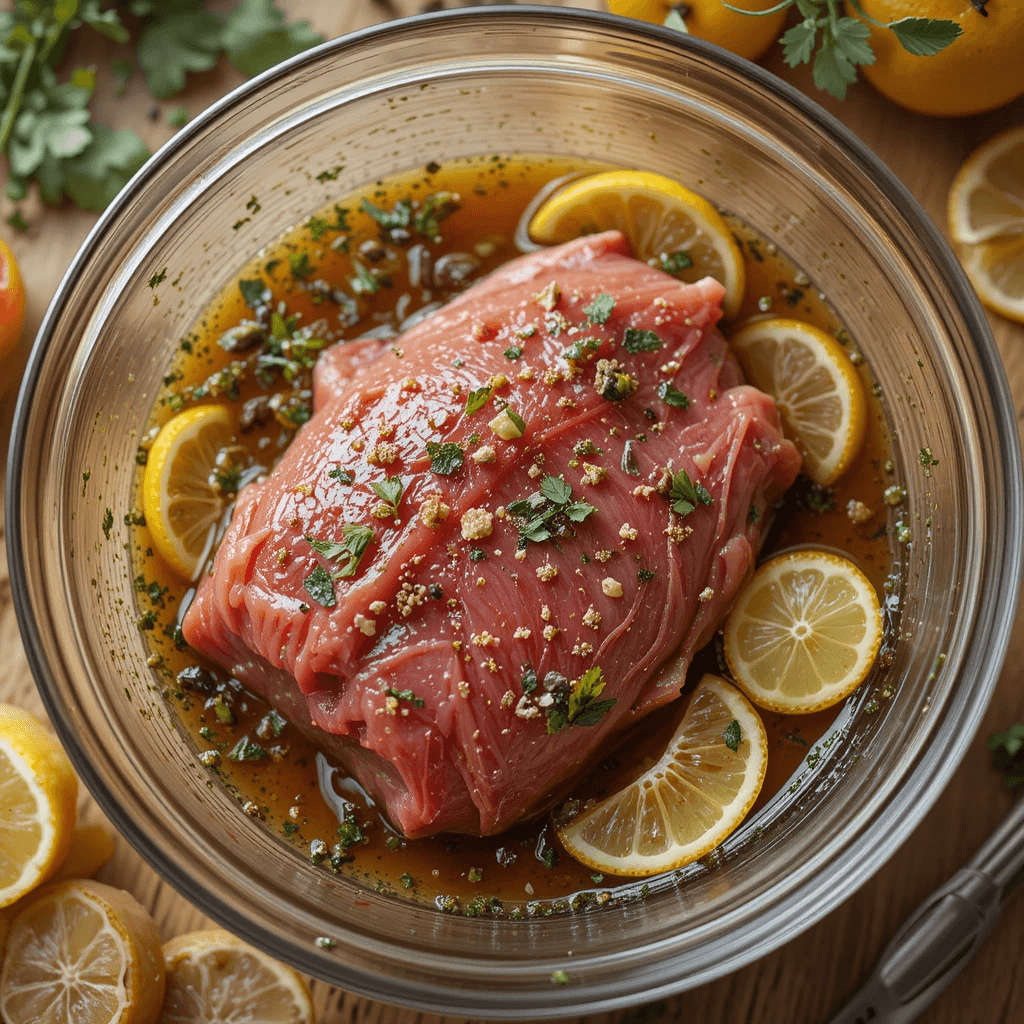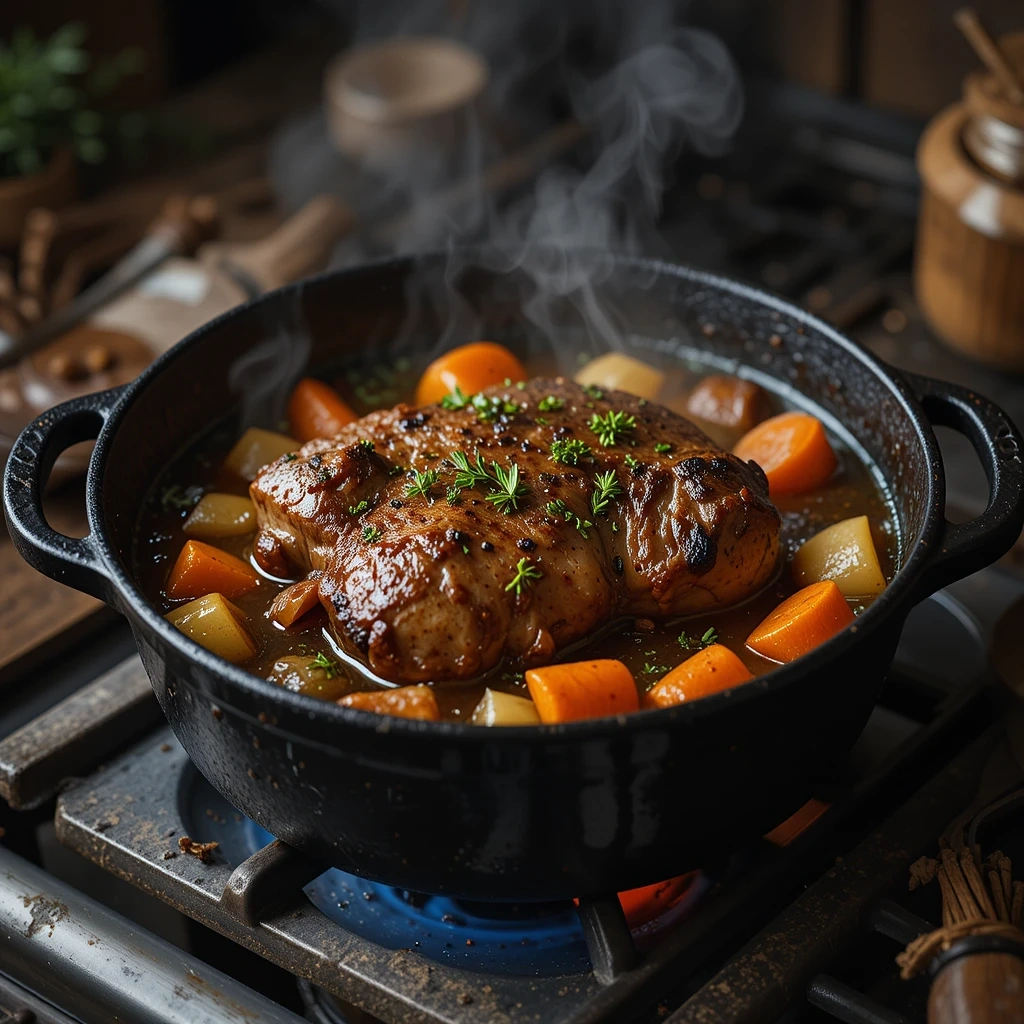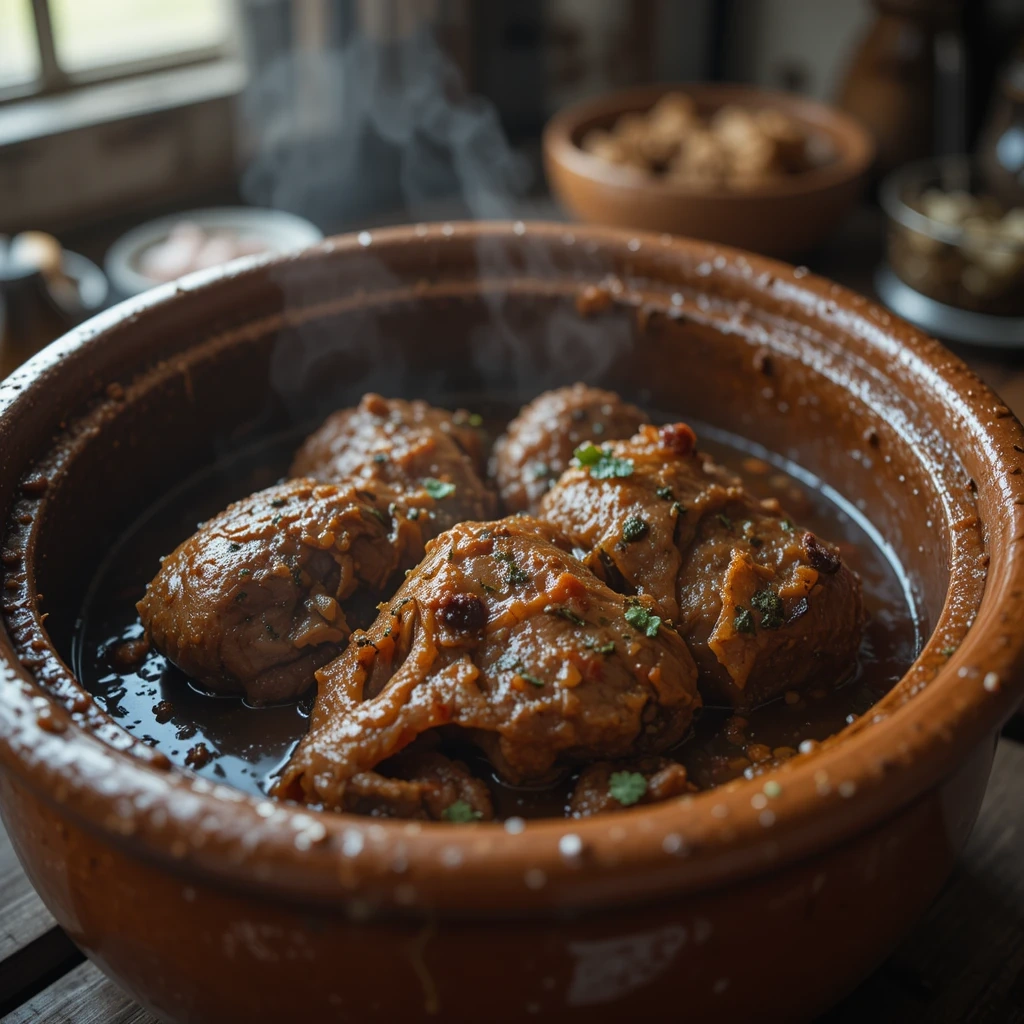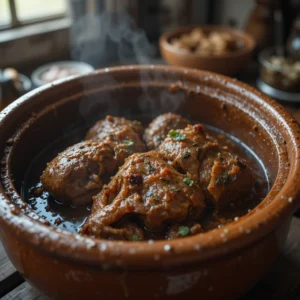.
Goat meat, a staple in various cuisines around the world, is known for its unique flavor and nutritional benefits. Selecting the right cut, marinating it properly, and using slow-cooking methods are key to unlocking its full potential. This blog post will guide you through essential steps and techniques for preparing a tender and flavorful goat meat dish, highlighting the best practices to ensure a delicious and satisfying meal.
When it comes to cooking a tender goat meat stew, selecting the right cut of meat is crucial. The best cuts for stewing are typically from the shoulder or leg of the goat. These cuts are well-marbled with fat and connective tissue, which helps to keep the meat moist and tender during the cooking process.
Additionally, look for meat that is a vibrant red color with a fine texture, as this indicates freshness and quality. Avoid cuts that appear discolored or have a strong odor, as these are signs of spoilage. Another important consideration when selecting goat meat for stewing is the age of the animal.
Younger goats, also known as kid or chevon, tend to have more tender meat compared to older goats. Therefore, if tenderness is a priority, opt for meat from younger animals. By carefully choosing the right cut of goat meat, you can set the stage for a delicious and tender stew.
Table of Contents
Marinating the Goat Meat for Maximum Flavor
Marinating goat meat before cooking is an essential step in enhancing its flavor and tenderness. A simple marinade can be made using a combination of acidic ingredients such as vinegar, citrus juice, or yogurt, along with flavorful herbs and spices like garlic, ginger, thyme, and rosemary. The acidic components help to break down the tough muscle fibers in the meat, while the herbs and spices infuse it with delicious flavors.
To marinate the goat meat, place it in a bowl or resealable plastic bag and pour the marinade over it, ensuring that the meat is fully coated. Then, refrigerate it for at least a few hours or ideally overnight to allow the flavors to penetrate the meat. This process not only tenderizes the goat meat but also adds depth and complexity to the stew’s overall taste.
By marinating the goat meat properly, you can elevate the flavor profile of your stew and ensure that the meat is succulent and tender.
Discover how to prepare flavorful and tender Beef Bavette with this step-by-step guide from Veibrant Recipes. Often referred to as flap steak, beef bavette is a juicy, affordable cut that’s perfect for grilling, pan-searing, or marinating. This recipe highlights cooking tips, seasoning ideas, and serving suggestions to help you bring out the best in this underrated cut of beef.
Check out the full guide here!

Using the Right Cooking Method for Tender Meat
The cooking method you choose plays a significant role in determining the tenderness of your goat meat stew. For tender results, consider using slow cooking methods such as braising or stewing. These techniques involve cooking the meat at low temperatures for an extended period, allowing the tough connective tissues in the meat to break down gradually and become tender.
Braising involves searing the goat meat in a hot pan to develop a rich flavor and then simmering it in a flavorful liquid, such as broth or wine, at a low temperature for an extended period. Stewing, on the other hand, involves cooking the meat in a liquid over low heat for an extended period until it becomes tender and flavorful. Both methods are effective in yielding tender goat meat stew that is rich in flavor and succulence.
Adding Flavorful Ingredients to Enhance the Stew
| Ingredient | Flavor Contribution |
|---|---|
| Garlic | Rich, savory flavor |
| Onion | Sweet and aromatic |
| Tomato paste | Deep, umami flavor |
| Herbs (thyme, rosemary, bay leaves) | Earthy and aromatic |
| Wine or vinegar | Bright acidity |
In addition to marinating the goat meat, adding flavorful ingredients to the stew can further enhance its taste and tenderness. Consider incorporating aromatic vegetables such as onions, carrots, and celery, which not only add depth to the flavor but also contribute to the overall tenderness of the stew. Additionally, herbs and spices such as bay leaves, thyme, and paprika can infuse the stew with layers of savory and aromatic notes.
To further enrich the flavor and texture of the stew, consider adding umami-rich ingredients such as tomato paste, soy sauce, or Worcestershire sauce. These ingredients can deepen the savory profile of the stew while also contributing to its overall tenderness. By thoughtfully selecting and incorporating flavorful ingredients, you can elevate your goat meat stew to new heights of taste and tenderness.

Cooking the Stew at the Right Temperature and Time
Achieving tender goat meat in your stew also depends on cooking it at the right temperature and for the appropriate duration. When using slow cooking methods such as braising or stewing, it’s essential to maintain a low and consistent temperature throughout the cooking process. This gentle heat allows the connective tissues in the meat to break down slowly without causing it to become tough or dry.
Furthermore, be patient with the cooking time. Goat meat requires a longer cooking time compared to other meats due to its lean nature and muscular structure. Depending on the cut and size of the meat pieces, this could range from 2-3 hours for smaller cuts to 4-5 hours for larger ones.
By ensuring that your stew is cooked at the right temperature for an adequate duration, you can achieve perfectly tender goat meat that melts in your mouth.

Allowing the Stew to Rest for Maximum Tenderness
Once your goat meat stew has finished cooking, it’s important to allow it to rest before serving. Allowing the stew to rest for 10-15 minutes before serving helps redistribute the juices within the meat, resulting in a more tender and succulent texture. This resting period allows the residual heat to continue breaking down any remaining tough fibers in the meat while ensuring that it remains juicy and flavorful.
During this resting phase, cover the stew with a lid or foil to retain its warmth and moisture. This simple yet crucial step can make a noticeable difference in the tenderness of your goat meat stew when it’s time to enjoy it. By allowing your stew to rest before serving, you can ensure that each bite is tender and bursting with flavor.
Do you have a favorite goat meat recipe or a secret tip for cooking it to perfection? I’d love to hear from you! Share your favorite goat meat dishes in the comments below, and let’s get a conversation going about how everyone enjoys this incredible protein. Whether it’s a dish you’ve perfected over time or a recipe you’ve recently discovered, your contribution might inspire someone else to try something new.
https://www.allrecipes.com/recipe/228238/goat-stew
5 Common Mistakes to Avoid and Their Solutions
While cooking goat meat stew, there are several common mistakes that can lead to tough or dry results. One common mistake is using high heat during cooking, which can cause the proteins in the meat to contract rapidly and become tough. To avoid this, always opt for low and slow cooking methods when preparing goat meat stew.
Another mistake is not properly marinating the goat meat before cooking. Without adequate marination, the meat may lack flavor and tenderness. To remedy this, ensure that you marinate the goat meat for an extended period before cooking to maximize its flavor and tenderness.
Additionally, overcooking goat meat can result in toughness and dryness. To prevent this, monitor your stew closely during the cooking process and adjust the cooking time as needed based on the tenderness of the meat. Furthermore, using an inappropriate cut of goat meat for stewing can lead to less-than-ideal results.
Always select cuts from the shoulder or leg of the goat for optimal tenderness in your stew. Lastly, neglecting to allow the stew to rest before serving can impact its overall tenderness. Be sure to factor in a resting period after cooking to ensure that your goat meat stew is as tender as possible when served.
By avoiding these common mistakes and implementing their solutions, you can ensure that your goat meat stew turns out tender, flavorful, and satisfying.
FAQs
What are the essential steps to cooking tender goat meat stew at home?
The essential steps to cooking tender goat meat stew at home include selecting the right cut of goat meat, marinating the meat for maximum flavor, using the right cooking method for tender meat, adding flavorful ingredients to enhance the stew, cooking the stew at the right temperature and time, and allowing the stew to rest for maximum tenderness.
How do I select the right cut of goat meat for stew?
When selecting goat meat for stew, it’s important to choose cuts from the shoulder, leg, or loin, as these cuts are best for slow cooking and will result in tender meat. Look for meat that is pinkish-red in color and has a small amount of marbling for the best flavor and tenderness.
What is the best way to marinate goat meat for maximum flavor?
To marinate goat meat for maximum flavor, use a mixture of acidic ingredients such as vinegar or citrus juice, along with herbs, spices, and aromatics. Allow the meat to marinate for at least 4-6 hours, or preferably overnight, to ensure that the flavors penetrate the meat.
What is the right cooking method for tender goat meat stew?
The right cooking method for tender goat meat stew is slow cooking at a low temperature. This can be achieved by using a slow cooker, braising the meat in a Dutch oven, or cooking the stew in a pressure cooker. Cooking meat slowly helps it become tender and enhances its flavors.
How can I enhance the flavor of goat meat stew?
To enhance the flavor of goat meat stew, add flavorful ingredients such as onions, garlic, ginger, tomatoes, and a variety of herbs and spices. Consider adding ingredients like coconut milk, curry powder, or chili peppers for a unique and delicious flavor profile.
What is the right temperature and cooking time for goat meat stew?
The right temperature for cooking goat meat stew is low and slow, typically around 275-300°F (135-150°C). The cooking time will vary depending on the cut of meat and the cooking method used, but generally, goat meat stew should be cooked for 2-3 hours until the meat is tender.
Why is it important to allow the stew to rest after cooking?
Allowing the stew to rest after cooking is important because it allows the meat to relax and reabsorb some of the juices, resulting in a more tender and flavorful dish. Resting the stew for 10-15 minutes prior to serving will ensure it reaches peak tenderness.
What are some common mistakes to avoid when cooking goat meat stew?
Some common mistakes to avoid when cooking goat meat stew include using the wrong cut of meat, not marinating the meat for long enough, cooking the stew at too high of a temperature, not allowing the stew to rest before serving, and not adjusting the seasoning to taste.

goat meat
Ingredients
- Goat meat shoulder or leg, cut into stew-sized pieces
- Vinegar citrus juice, or yogurt (for marinating)
- Garlic ginger, thyme, rosemary (for marinating and stew)
- Onions carrots, celery (aromatic vegetables)
- Bay leaves paprika (herbs and spices for stew)
- Tomato paste soy sauce, or Worcestershire sauce (umami-rich ingredients – optional)
- Broth or wine cooking liquid
- Salt and pepper to taste
- Pros:
- Tender and flavorful meat
- Rich and savory flavor profile
- Versatile and can be adapted to different cuisines
- Cons:
- Requires a long cooking time
- Goat meat can be harder to find in some locations
- Can be tough if not cooked properly
Instructions
- Select the right cut of goat meat (shoulder or leg).
- Marinate the goat meat for at least a few hours, or ideally overnight, in a mixture of acidic ingredients, herbs, and spices.
- Sear the marinated goat meat in a hot pan to develop a rich flavor.
- Add aromatic vegetables (onions, carrots, celery) and cook until softened.
- Stir in tomato paste (optional) and cook for a few minutes.
- Add broth or wine to the pot, ensuring that the meat is covered.
- Bring to a simmer, then reduce heat to low, cover, and cook for 3-4 hours, or until the meat is very tender.
- Season with salt and pepper to taste.
- Allow the stew to rest for 10-15 minutes before serving.


4 thoughts on “7 Essential Steps to Cooking Tender Goat Meat Stew at Home”